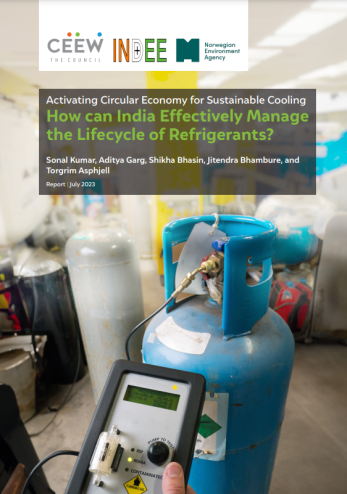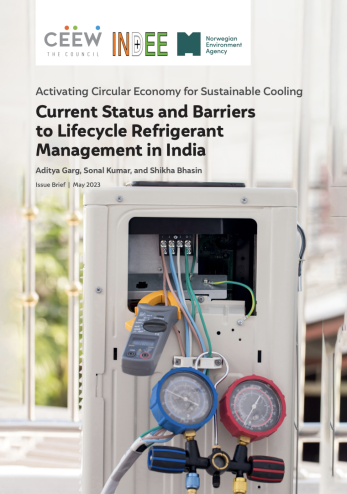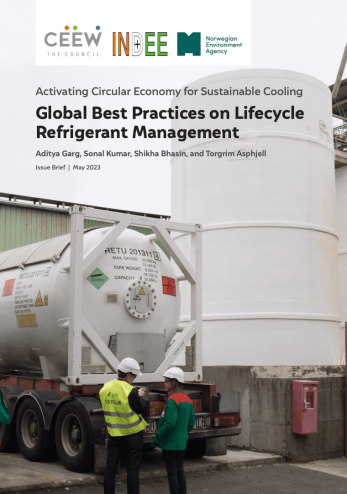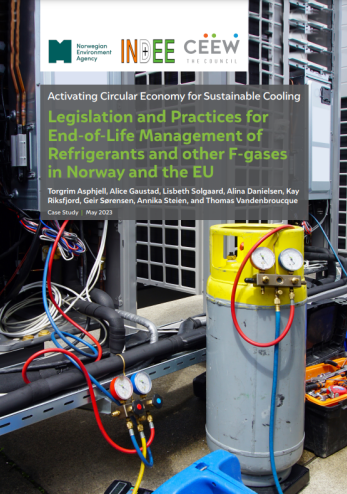Issue Brief
Internet of Things and its Impact on India’s Air-Conditioning Servicing Landscape
Himanshu Dixit, Shikha Bhasin and Deepa Janakiraman
October 2021 | Sustainable Cooling
Suggested citation: Dixit, Himanshu, Shikha Bhasin and Deepa Janakiraman. 2021. Internet of Things and its Impact on India’s Air-Conditioning Servicing Landscape. New Delhi: Council on Energy, Environment and Water.
Overview
This study puts in perspective the Internet of Things (IoT) transition currently underway in a number of sectors, including the refrigeration and air-conditioning (RAC) sector. The transition is manifested in RAC units, increasingly becoming more capable, sophisticated, and communicative, that connect to the internet and track crucial information through smart sensors. These developments hold serious ramifications for the AC servicing sector as well. In this context, the study examines the potential challenges and opportunities for customers, servicing and maintenance businesses and service technicians. Further, it recommends the possible policy interventions to leverage these changes and drive the larger goals of the India Cooling Action Plan.
Key Findings
- In terms of future capabilities, integrating IoT with home appliances such as ACs and refrigerators will enable the following:
- Self-controlled and optimised devices
- Collection, storage, transfer and periodic analysis of data on device performance and usage parameters
- Self-diagnostic features
- Automated servicing alarms/calls
- IoT can power technologies to track key performance indicators and share the data with the user. This will go a long way in solving the problem of information asymmetry that currently exists between users and service technicians with regards to the quality of servicing and good servicing practices.
- The following are the critical ways in which IoT would support the transition of the servicing sector :
- Improvement in servicing demand assessment
- Provide operational data of devices, which would be a huge value-add, especially for on-demand internet service companies
- Increase in the number and type of both direct and indirect jobs
- Enable longer maintenance contracts because of the increased awareness about servicing
- Certified technicians will be at an advantage as IoT would lead to aggregation of servicing business
- IoT can also make service technicians more efficient. Using the device data, technicians can come prepared with the right tools, parts, and refrigerants that are meant for a particular model. Technicians can also use the Iot platform for incremental learning.
Key Recommendations
- Update the training curriculum for technicians to reflect the new skills required to perform the job. Integration of mechanical engineering and electronics education will be needed to navigate the emerging world of IoT.
- The Bureau of Energy Efficiency should create awareness and educate the consumer about making replacement decisions.
- Develop service performance standards in addition to checklists for good servicing practices for both consumers and technicians since IoT makes the measurement of device performance before and after servicing possible.
- Standardise IoT protocols keeping in mind users’ privacy, technicians’ welfare, and OEMs’ commercial interests.
IoT can power technologies to track key performance indicators and share the data with the user. This will go a long way in solving the problem of information asymmetry that currently exists between users and service technicians with regards to the quality of servicing and
good servicing practices.







